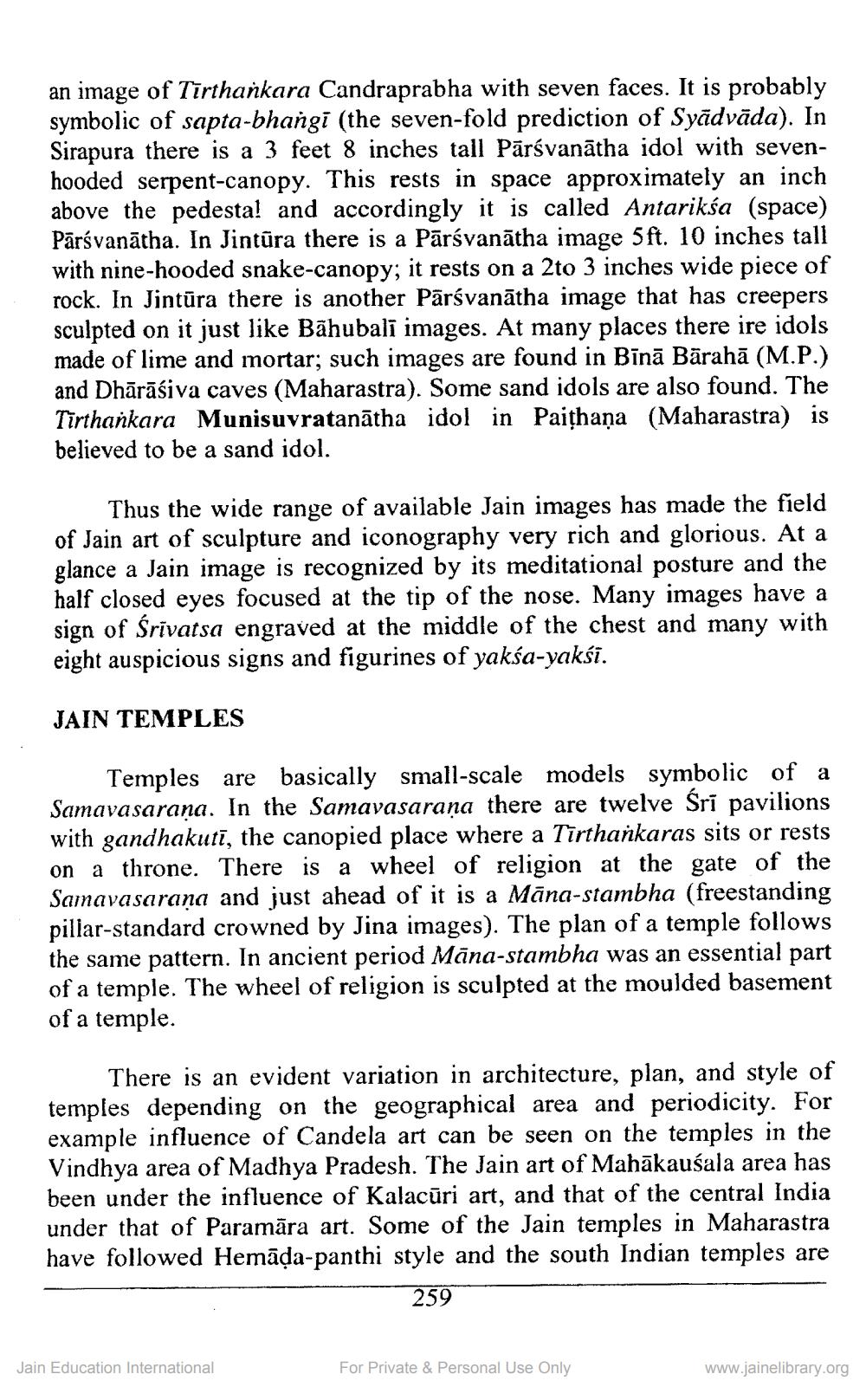________________
an image of Tirthankara Candraprabha with seven faces. It is probably symbolic of sapta-bhangi (the seven-fold prediction of Syādvāda). In Sirapura there is a 3 feet 8 inches tall Pārsvanātha idol with sevenhooded serpent-canopy. This rests in space approximately an inch above the pedesta! and accordingly it is called Antariksa (space) Pārsvanātha. In Jintūra there is a Pārsvanātha image 5ft. 10 inches tall with nine-hooded snake-canopy; it rests on a 2to 3 inches wide piece of rock. In Jintūra there is another Pārsvanātha image that has creepers sculpted on it just like Bāhubalī images. At many places there ire idols made of lime and mortar; such images are found in Bīnā Bārahā (M.P.) and Dhārāśiva caves (Maharastra). Some sand idols are also found. The Tirthankara Munisuvratanātha idol in Paithaņa (Maharastra) is believed to be a sand idol.
Thus the wide range of available Jain images has made the field of Jain art of sculpture and iconography very rich and glorious. At a glance a Jain image is recognized by its meditational posture and the half closed eyes focused at the tip of the nose. Many images have a sign of Srivatsa engraved at the middle of the chest and many with eight auspicious signs and figurines of yakśa-yaksi.
JAIN TEMPLES
Temples are basically small-scale models symbolic of a Samavasaraña. In the Samavasaraņa there are twelve Śrī pavilions with gandhakutī, the canopied place where a Tirtharkaras sits or rests on a throne. There is a wheel of religion at the gate of the Samavasarana and just ahead of it is a Māna-stambha (freestanding pillar-standard crowned by Jina images). The plan of a temple follows the same pattern. In ancient period Māna-stambha was an essential part of a temple. The wheel of religion is sculpted at the moulded basement of a temple.
There is an evident variation in architecture, plan, and style of temples depending on the geographical area and periodicity. For example influence of Candela art can be seen on the temples in the Vindhya area of Madhya Pradesh. The Jain art of Mahākaušala area has been under the influence of Kalacūri art, and that of the central India under that of Paramāra art. Some of the Jain temples in Maharastra have followed Hemāda-panthi style and the south Indian temples are
259
Jain Education International
For Private & Personal Use Only
www.jainelibrary.org




